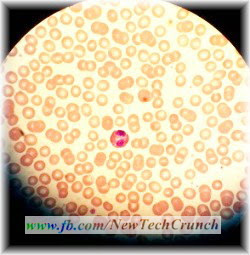One of the biggest tragedies with the women’s of developing
countries is lack of blood (Anemia) in body, which causes sometime to death. And the tests which are being used to identify
such problems / diseases are usually not available in those countries or not in
access of poor peoples. However, students of university of John Hopkins invented
a sensor by which a Smartphone convert into a cheaper blood testing device and become
able to analyze blood. In Seattle, this device is recently unveiled, which soon
will be tested in African Countries.
In developing countries a shortage of clean water is possible
but not of cell phones, and that’s the only reason that the team of John
Hopkins use the easily available device to for this kind purpose. They named
this device as HemoGlobe, which is consisting on a cheap sensor connected with
a Smartphone. The sensor is of same type as use in measurement of Oxygen in blood.
It’s one of the end is stick with patient’s figure, after that a light is shined
on finger and at the same time it measure the blood color with use of different
wavelengths. Different colors show different level of hemoglobin.
Hemoglobin is basically an iron mixed protein which is use
by our body to transfer oxygen to all body cells using lungs. The cell phone
which is connected with the sensor is work as a display, and tell us using multiple
colors that is patient is victim of lack of blood or not, or if yes then of
what intensity.
HemoGlobe not only take reading of blood, but it also
automatically send results in form of text message to a server which gives the complete
information of all Anemia patients in the local.
According to inventors of the device is that the facility of
HemoGlobe to each Smartphone will be available at price of 20 USD. And US
Agency for International Development and Bill & Melinda Gates foundation
also provide partial funds.



0 comments:
Post a Comment